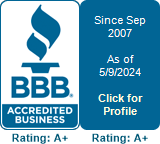3 Puzzling Aspects Of Cash Flow Monitoring Explained
admin • December 19, 2023
Cash flow management is vital for businesses of all sizes, yet many entrepreneurs struggle to understand the complexities involved. Knowing how to manage and monitor cash inflows and outflows in your business can help you make informed decisions, prevent cash shortfalls, and improve your company's financial health.
However, several puzzling aspects of cash flow monitoring can make it challenging to understand. This blog post will explain these complex elements in simple terms to help you better manage your business's cash flow.
1. Understanding the Cash Flow Statement
The cash flow statement is a financial report showing how cash flows in and out of a company during a specific period. It includes three sections – operating activities, investing activities, and financing activities.
Operating activities include cash inflows and outflows related to the company's day-to-day operations, such as revenue from sales and supplier payments. Investing activities involve cash flows related to buying or selling long-term assets, like equipment or property. Financing activities include cash inflows from borrowing money or issuing stock and outflows from paying off debts or distributing dividends.
The main purpose of the cash flow statement is to provide insight into a company's liquidity or ability to pay off short-term debts. It also helps identify areas where a business may be spending too much or not generating enough revenue.
The statement is often compared to a checkbook register, where you can track and monitor every penny that goes in and out of your business. If you're unfamiliar with how to read a cash flow statement, it can initially seem overwhelming. However, once you understand the different sections and how they relate, you can gain valuable insights into your company's financial health.
2. Timing of Cash Inflows and Outflows
Timing is everything when it comes to money. You may have plenty of sales on the books, but if customers are not paying on time, that lack of cash coming into the business can cause a shortage. You still have bills and expenses to pay, such as payroll, rent, and supplier payments. This timing mismatch can result in a cash flow problem, even if the company is turning a profit.
Conversely, if you have a large cash inflow from a new investor or loan, it may seem like your business is in excellent financial shape. However, if that money is used to pay off existing debts or invest in long-term assets, it may not be reflected in your day-to-day operations and can diminish the company's liquidity.
To avoid these cash flow imbalances, you need to accurately track the timing of cash inflows and outflows. You can use cash flow projections and budgeting tools to anticipate and plan for future cash needs. This requires close attention to detail and constant adjustments to ensure that the timing of cash inflows and outflows align.
3. Cash Reserve Management
Every business needs enough cash on hand to cover immediate expenses and emergencies. However, some struggle with maintaining a sufficient cash reserve due to seasonal fluctuations, slow-paying customers, or unexpected expenses.
A cash reserve is a buffer against unexpected financial challenges and allows the business to continue operating smoothly. Your cash reserve should ideally cover at least three to six months of expenses if possible.
To build and maintain a healthy cash reserve, you need to closely monitor your cash flow and make adjustments as needed. This may involve reducing unnecessary expenses or improving collections from customers.
You can also establish a line of credit with your bank or set aside a portion of your monthly profits to build up your cash reserve. This may require sacrificing short-term gains for long-term stability.
If our business is struggling to maintain a positive cash flow, Quality Bookkeeping Services Inc. can help. Our experienced professionals can review your cash flow statements, identify areas for improvement, and create a customized plan to help you better manage your company's cash flow.
Contact us today to get started on improving your financial health and achieving long-term success.
DIY bookkeeping might sound good but could cost you money, time and lead to errors. Read this blog to learn the benefits of professional bookkeeping now!
Ensuring a steady cash flow is not just about survival but also about unlocking your business's immense potential. Read about our strategies for management.
Has your business gone through a big change recently? Learn about three situations that may require you to redefine your business tax commitments.
While petty cash may be a minor part of your operation, it's an important tool to have around. Read this blog to learn how to manage it effectively.
As a small-business owner, you know that every penny counts. Read this blog to learn how you can maximize your small company’s tax deductions.
Do you spend a lot on accounting? If your annual accounting spending is higher than the average, discover the following accounting mistakes to avoid.
Forensic accounting deals with the identification, analysis, and presentation of financial evidence. Read this blog to learn what kinds of cases they serve.













